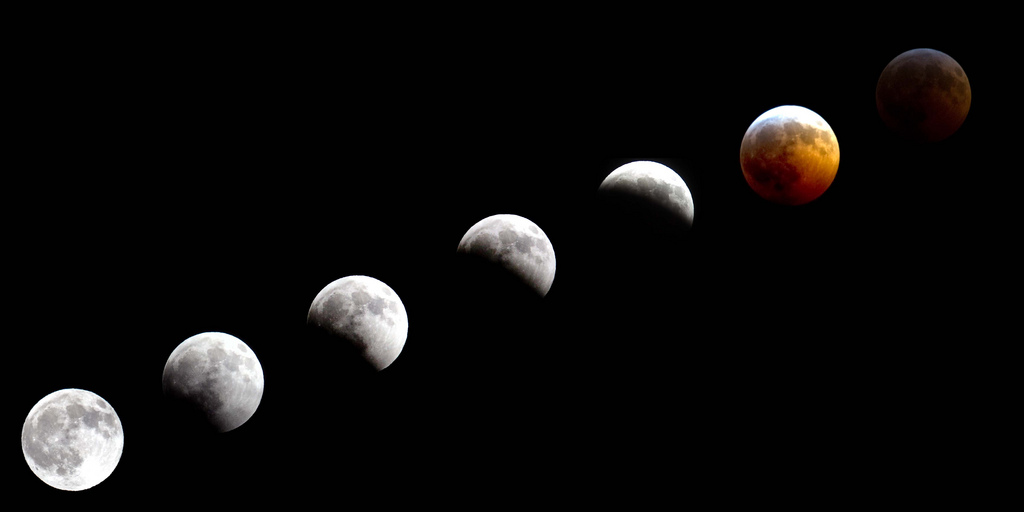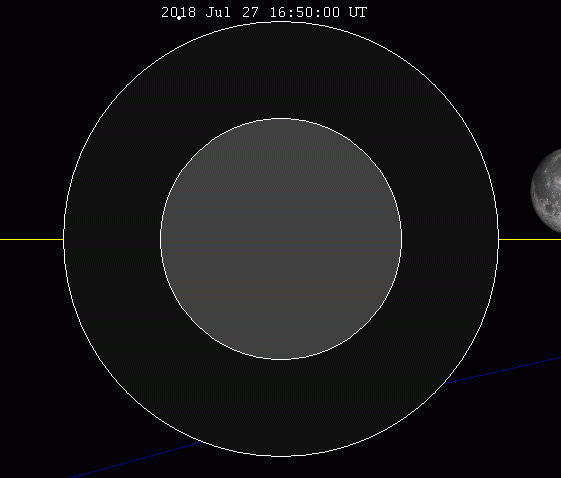
Stargazers, get ready to witness the longest total lunar eclipse of the 21st Century. On July 27, our moon will transform into a red orb for 1 hour, 42 minutes, and 57 seconds! The entire event, from the moment Earth’s shadow starts to fall upon the moon’s edge to the time when the bright full moon emerges, will take almost 4 hours. In comparison, this century’s shortest total lunar eclipse, which occurred on April 4, 2015, lasted a mere 4 minutes and 48 seconds, with a total duration of 1 hour and 40 minutes.

Total lunar eclipses, which occur when the Sun, Earth, and moon are in perfect alignment, with our planet in between the two bodies, are always spectacular. That’s because when Earth’s shadow falls on the moon, instead of going dark, our satellite transforms into what is commonly called a ‘blood moon.’ Though regarded as a bad omen by some, there is a perfectly logical scientific explanation for the spooky color. It is the result of the sun’s rays bending around the edge of our planet and landing onto the moon’s surface. However, since the Earth’s atmosphere scatters shorter wavelength light (colors like green or blue), only the longer wavelengths, or the redder-end of the spectrum, reach the surface of the moon, causing it to appear reddish-brown.

The length of the total eclipse is determined by the position of the moon as it passes through the Earth’s shadow. The more central it is, the longer the duration. Also significant is the distance of the moon from the Earth as it orbits our planet. On July 27, our satellite will not only pass through the mid-point of Earth’s shadow, but it will also be the farthest possible distance from our planet. This apogee full moon, or micro-moon, is smaller and slower-moving, and, therefore, takes more time to cross the Earth’s shadow than a full moon that is closer and moving more rapidly in orbit.

And if that is not enough excitement, Earth will also be passing between the Sun and Mars on July 27, putting the Red Planet at opposition in our sky, right next to the full moon. As a result, the planet, which is at its closest to Earth — and therefore, its brightest — since 2003, will live up to its nickname and appear red as well.

Unfortunately, given that the total eclipse will occur from 3:30 p.m. to 5:13 p.m. EDT, North Americans will have to observe the eclipse online via websites such as Slooh.com, which will live-stream the entire event. Additionally, the eclipse will only be visible from Australia as it is beginning and from South America as it is ending. However, those living in Africa, the Middle East, and Central Asia will be able to see it in its entirety. The good news is that the next total lunar eclipse, scheduled to occur on January 21, 2019, will be visible to all North American residents. While it won’t be the century’s longest, that ‘blood moon’ is expected to last a respectable 1 hour and 2 minutes!
Resources: Space.com, Earthsky.org, astronomyonline.org
